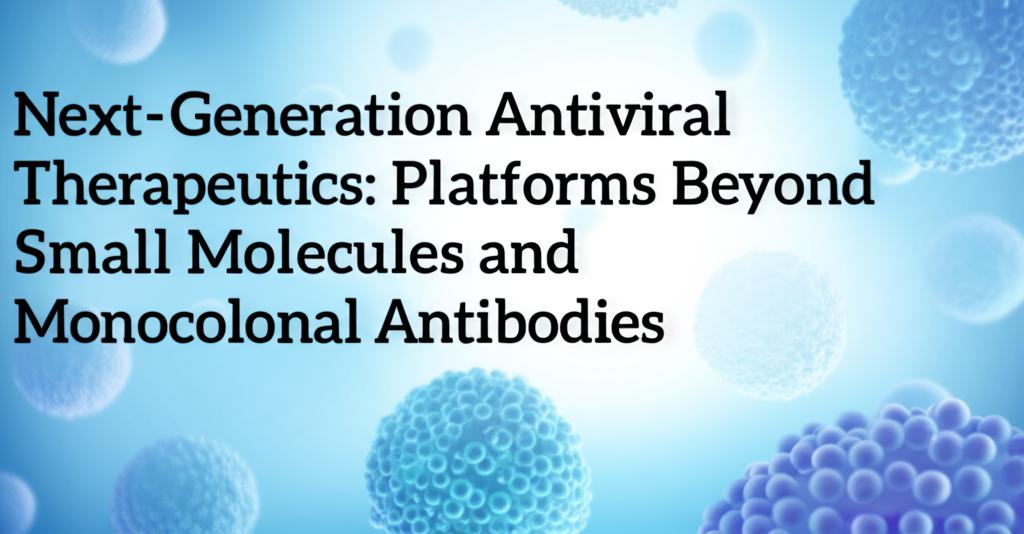The landscape of antiviral therapy is rapidly evolving. While small molecules and monoclonal antibodies have been the mainstays, limitations like viral resistance and the emergence of new pathogens necessitate exploring innovative therapeutic platforms. The goal is to develop strategies that offer broader effectiveness, potentially targeting multiple viruses or being rapidly adaptable to new threats.
Nucleic Acid-Based TherapeuticsThis category leverages RNA and DNA technologies to combat viruses. Approaches include:
- RNA Interference (RNAi) and Antisense Oligonucleotides (ASOs): These use short sequences of nucleic acids designed to bind specifically to viral RNA. This binding event can trigger the degradation of the viral RNA or block its translation into proteins, effectively halting viral replication. Variations like Locked Nucleic Acids (LNAs) can enhance stability and binding affinity. This approach offers high specificity and the potential for rapid design once a viral sequence is known.
- XNAzymes: These are synthetic enzymes made of xeno nucleic acids that can be engineered to cleave specific viral RNA sequences, offering another way to disrupt viral replication directly within infected cells.
CRISPR-Cas systems, originally bacterial immune systems, are being repurposed as powerful antiviral tools.
- CRISPR/Cas: This technology can be programmed to find and cut specific sequences within a virus's genetic material (DNA or RNA, depending on the Cas enzyme used). This targeted cleavage can disable the virus. Research is ongoing to ensure precision and minimize off-target effects on the host genome, potentially using modified systems or transient delivery methods.
Peptides, short chains of amino acids, offer advantages like good tissue penetration due to their smaller size compared to antibodies.
- Antiviral Peptides: Some peptides can directly interfere with viral processes, such as blocking the virus from entering host cells (fusion inhibitors). Lipopeptides, which combine peptides with fatty acids, are being explored to enhance antiviral activity and delivery.
- Peptide-Drug Conjugates (PDCs): Similar to antibody-drug conjugates (ADCs), PDCs link a targeting peptide (which binds specifically to infected cells or viral components) to a potent antiviral payload (often a small molecule). This aims to deliver the drug specifically where needed, increasing efficacy and reducing systemic toxicity.
Newer strategies aim not just to inhibit, but to actively destroy key viral components.
- PROTACs (Proteolysis Targeting Chimeras): These molecules are designed to bring a specific viral protein close to the cell's own protein disposal machinery (the ubiquitin-proteasome system), leading to the targeted destruction of the viral protein.
- RIBOTACs (Ribonuclease Targeting Chimeras): Applying a similar principle to RNA, RIBOTACs recruit cellular enzymes (ribonucleases) to degrade specific viral RNA targets.
Overcoming delivery challenges is crucial for many next-generation therapies. Nanotechnology plays a vital role by:
- Encapsulating fragile therapeutics (like nucleic acids or peptides) to protect them from degradation.
- Facilitating targeted delivery to specific cells or tissues, potentially using nanoparticles, liposomes, or other nanostructures.
- Improving the stability and solubility of antiviral compounds.
Instead of directly targeting the virus, some approaches aim to inhibit host cell factors that viruses hijack for their own replication. This strategy holds promise for broad-spectrum activity, as many different viruses may rely on the same host pathways, and it may be less prone to the development of viral resistance.
Broad-Spectrum and Platform PotentialA key driver for many of these next-generation approaches is the development of "platform technologies." Similar to how mRNA vaccine platforms can be quickly adapted to new pathogens, the goal is to create antiviral platforms (e.g., based on CRISPR or ASOs) that can be rapidly tailored to combat newly emerging viruses. Many of these strategies inherently offer the potential for broad-spectrum activity, targeting conserved mechanisms across viral families or utilising host factors.
While significant hurdles remain in terms of optimizing delivery, ensuring safety (especially regarding off-target effects for gene editing), and translating these technologies effectively into clinical practice, these innovative platforms represent the future direction of antiviral drug development. They offer the potential for more potent, specific, adaptable, and broadly effective treatments to combat both existing and future viral threats.

